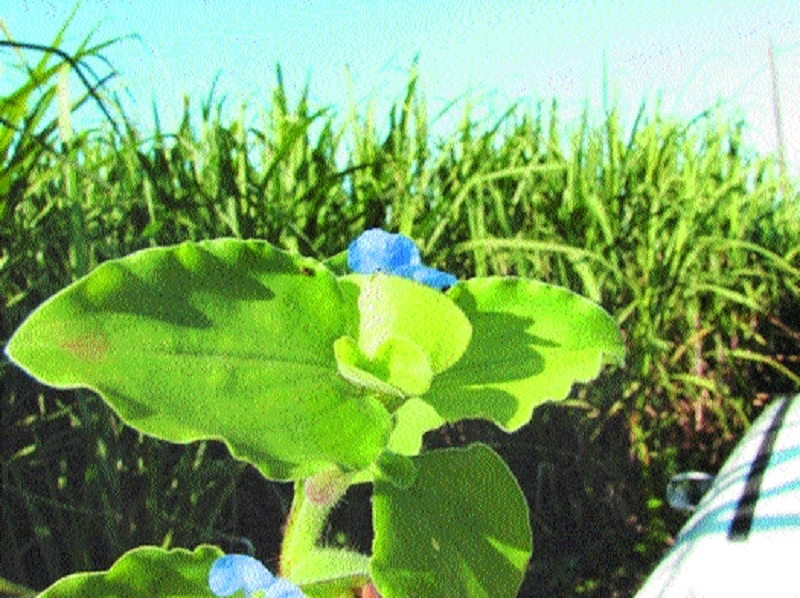Kena: Nature’s gift to relieve pain, fever
| Date :22-Sep-2019 |

By Rajendra Diwe :
Kena leaves are considered as the most sacred leaves in pooja. Women perform pooja of Lord Shiva and Parvati on Hartalika, the next day people perform Ganesh Pooja and after three days of Ganesh Chaturthi, the Mahalaxmi festival has been celebrated. The most common factor of all these festivals is the leaved of Aghada and Kena. People worship Lord Ganesh with 21 leaves of Aghada and Kena each and with 16 leaves they worship Mahalaxmi. Unfortunately, after offering the leaves people throw them away in water bodies at the time of immersion.
The Kena leaves are found grown at the road side, in garden and near water bodies in both urban and rural areas. Botanically, the plant is known as Commelina Benghalensis, an herbaceous perennial plant, with long, creeping, succulent stems. The leaves are spirally arranged, alternate and ovate in shape. The herb bears flowers which have blue petals. The leaves are used as food in many countries in Asia and Africa. Kena is widely distributed in 29 countries including India, Bhutan, Nepal, China, Japan and Pakistan etc. Kena or Kamchat or Keni are the popular names in Marathi. In Hindi, it is known as Kana or Kankawa or Buchna while in English it is famous as tropical spiderwort or Benghal Dayflower or Wondering Jew. It is known as Sheshmuli in Gujarat while Hittangani in Karnataka.
In Kerala it is popular as Kanankoai or Kanchatam; in Manipur as Wanden khoibi; in Sanskrit the leaves are known as Kanchata or Kosapuspi or Marishajalaja; in Telugu it is known as Neerukaassuvu or Nirukassuvu while in Tamil it is known as Kanangkozai or Adutinnathalai and in Nepal it known as Kane. These leaves are rampantly used in Pooja during the festivals in number of Indian states, but in Southern states it is an important ingredient of Sambar and eaten with Idli or Wada. In some tribal areas in Maharashtra, the leaves are steamed, cooked in local masala and eaten as a vegetable. Also pakodas made from these leaves are very tasty. These leaves are good source of protein.
They contain carbohydrates, tannins, glycosides, volatile oils, resins, balsams, flavonoids and saponins. Pharmacologically the leaves have analgesic (pain reliever), antipyretic (reduce fever) and anti-inflammatory (reduce swelling) properties. Kena is considered as good fodder for cattle as it is reported to increase the milk production naturally in cows. The leaves are eaten as vegetable in Africa. With this different components of the herb are used as medicine for sore feet, sore throat, burns, eye irritation and stomach irritation. Whereas, in Southern Africa, Kena is used to combat infertility. In China, Kena is used medicinally as a diuretic, febrifuge (reducing fever) and anti-inflammatory. In Pakistan, it is used as animal fodder and also eaten by humans as a vegetable. It is also used there medicinally, but with different purported effects, including as a laxative and to cure inflammations of the skin as well as leprosy. The people of Nepal eat the young leaves as a vegetable, use a paste derived from the plant to treat burns, and treat indigestion with a juice produced from the roots. Its use as a famine food in India has been recorded. In South East Asia and Africa it is used as fodder and also medicinally as a poultice.